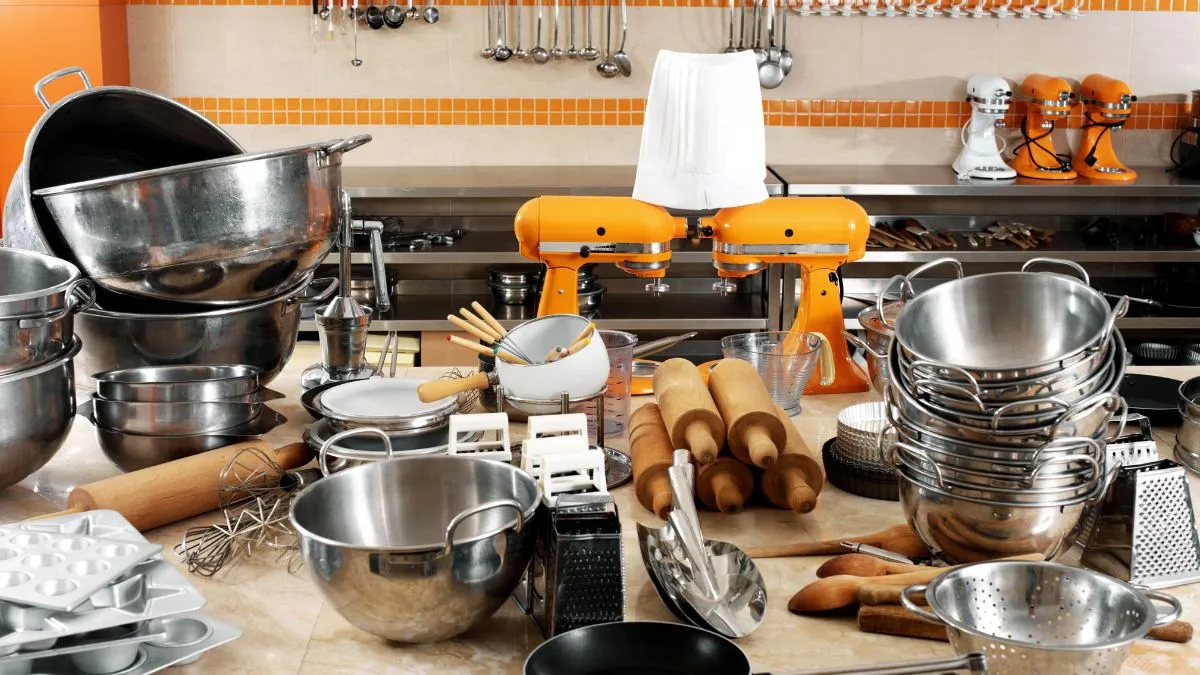- By Bornika Das
- Thu, 10 Apr 2025 03:03 PM (IST)
- Source:JND
Microplastics In Kitchen: Microplastics are everywhere in the environment. Be it the food we eat, the water we drink or the air we breathe, microplastics are tiny fragments of plastics that are entering into the body with people’s consciousness. Besides, microplastics are also found in food items, including seafood, salt, sugar, fruits, vegetables and tea bags. As people consume these food items, microplastics are released into the bloodstream and enter the brain, liver, kidney, heart and other crucial organs, leading to chronic diseases. Colombia University published their research work named Proceedings of The Natural Ingredients of Science and mentioned that around 240,000 nanoplastics are found in a one-litre plastic bottle of water.
According to a 2024 study published in Science of The Total Environment journal, microplastic contamination could also begin in the kitchen, where processes like heating, cooling, mixing, slicing and storing occur as a part of food contamination. There are several items in the kitchen which contain microplastic and when these are used, people unknowingly intake them, which enter into their bloodstream. Here’s a list of five kitchen items that increase the intake of microplastics.
Kitchen Items That Contain Microplastics
Plastic Containers
Plastic containers are common in the kitchen, however, with repeated usage, they start releasing microplastics. Even the act of opening and closing the containers can generate microplastics. The problem worsens when these containers become old or scratched. Moreover, if these containers containing foods are microwaved or used to keep hot foods, the risk of breakdown and transfer of plastic increases. Swap these plastic containers with glass or stainless steel storage options.
Old Plastic Cookware
Plastic cookware, especially old ones, can increase microplastic ingestion. Plastic cookware coatings are made of Teflon and other synthetic polymers that can degrade over time. When these cookwares are used at high temperatures, they release both chemicals and microplastics. It is ideal to use stainless steel, cast iron or ceramic cookware.
Plastic Cutting Boards
Little do people know that the plastic cutting board they’re using can be a major source of microplastics. Especially when you’re slicing, chopping or dicing food on these boards, especially meat, tiny plastic particles break off and get mixed with the food. Even with time, the knife scratches deepen and increase the chances of contamination. Opt for bamboo or wooden cutting boards instead of plastic ones.

Microplastics In Kitchen Utensils (Image Credits: Canva)
Blenders With Plastic Jars
When blenders are used, a large amount of microplastic is released due to friction. As per the study by the Journal of Hazardous Materials, billions of plastic particles are released in just 30 seconds of blending. This is concerning, especially when smoothies or frozen drinks are prepared with ice or hard food. Consider upgrading plastic jars with glass jars.
Cleaning Sponge
Scrubbing dishes causes friction, which can make the microplastics break off the sponge and contaminate the kitchen. Always rinse the sponge after use, which will help remove most of the particles and get it washed out with water. Opt for natural sponges made of cellulose or other biodegradable materials instead of synthetic ones.
